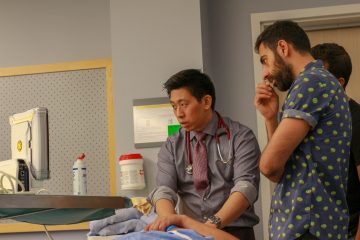Simulation based education is now a core component of resident training at the University of British Columbia. With training sessions during our boot camp, simulation education allows early exposure to complex clinical scenarios, and internal medicine procedures in a low risk, formative environment.
Currently, the program employs a number of different simulation modalities, including part-task trainers, theatre based simulation, and hi fidelity mannequins. All three major teaching hospitals are equipped with a simulation centre with a hi-fidelity mannequin, and case based simulation education is a regular part of academic half day.
During early resident education, all junior residents are exposed to part-task trainers to learn internal medicine bed side procedures, and are exposed to ultrasound-guided internal medicine procedures.
For trainees that are interested in simulation based education, there is ample opportunity to participate on the simulation education committee to further develop the simulation curriculum, as well as address the ever changing educational needs of the resident body.
The procedure curriculum spans throughout the first year of residency, starting with an introduction in bootcamp, and followed up with additional hands on sessions throughout the first year of residency.
Boot Camp Curriculum: This usually involves simulated procedures with task trainers, as well as standardized patient scenarios for communication skills
Rapidly Deteriorating Patient Scenarios: A formal part of academic half day for all residents. Provides exposure to high risk clinical scenarios in a safe environment.
As residents progress in their training, cases become more complex to reflect their level of training. These scenarios not only provide residents the opportunity for clinical learning, but also provides a space to develop crisis resource management, communication skills, as well as self-reflection and evaluation.
Procedure Training: currently the program has part task trainers for most internal medicine procedures, these would include:
- central line placement
- arterial line placement
- ABG
- Arthrocentesis
- Lumbar Puncture
- Thoracocentesis
- Paracentesis
Procedure Trainers are ultrasound compatible where appropriate.

